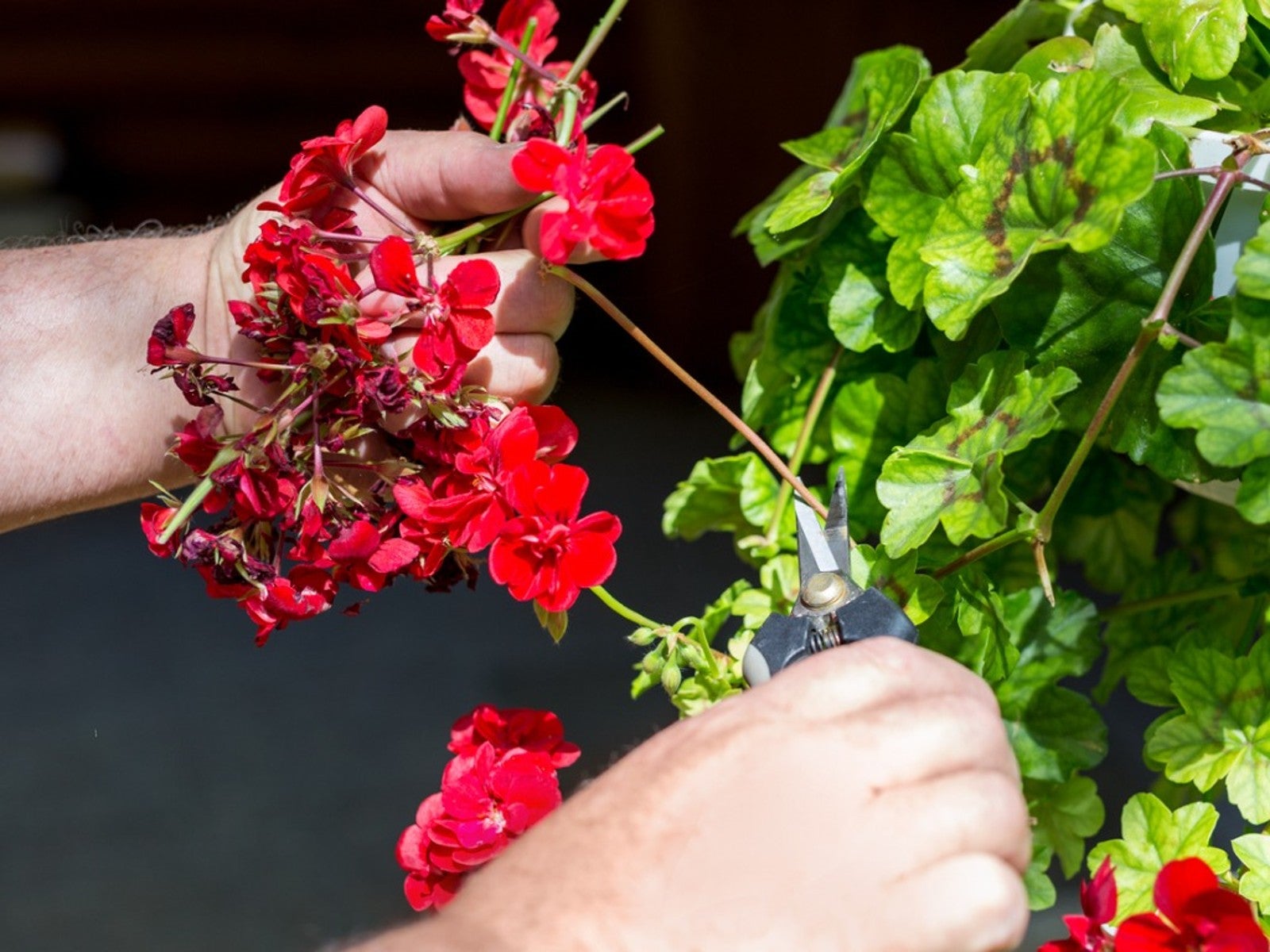Learn To Deadhead Geraniums The Right Way


With their brilliant, colorful blooms, geranium plants have long been a favorite of many ornamental gardeners. Though their requirements for growth vary somewhat between annual and perennial types, geranium plants with their lasting seasonal interest are sure to please any gardener. With routine care, such as frequent deadheading, you can help keep your geranium plants happy and healthy. In this article, we will discuss in greater detail how and when to deadhead geraniums.
Should You Deadhead Geraniums?
The first step in determining whether you should deadhead geranium plants is conducting some further research on the specific species you are growing. Though common bedding geraniums are often found at garden centers, there are actually hundreds of types within the genus Geranium. Furthermore, the use of the term “geranium” as a common name can lead to further confusion regarding their growth and maintenance.
Fortunately, deadheading is considered to be beneficial to most annual plants -- more specifically, those which are repeat bloomers. Some perennials will also benefit from deadheading, however, there are some exceptions. As certain perennials are considered to be self-clearing, deadheading may not be required. Many sterile species may also continue to bloom readily without the removal of flowers that have faded.
How Do You Deadhead Geraniums?
Deadheading plants is a helpful skill to master for most any gardener. Deadheading simply means removing spent or faded flower heads from the plant. While deadheading is not necessary for some plants, it can greatly improve the overall health and vigor of many species. Removing each flower after it has finished blooming prevents the production of seed. This is especially beneficial to control the growth and population of plant types which spread or reseed rapidly. Since the plant was unable to successfully produce seed, most species will use their energy to engage in quick growth to produce even more blooms. Often, deadheading results in the production of established plants which are much larger and bushier than their unpruned counterparts.
Learning how to deadhead a geranium is simple, and very similar to the process of removing blooms from other plant types. After the flower has started to wilt, it can be clipped from the plant. This task is usually completed through the careful use of garden pruners or secateurs. Deadheading is best done when temperatures are cool, either in the morning or in the evening. The plants should also be dry, as to prevent the potential for spread of fungal or bacterial diseases from one plant to another.
To remove the faded flower, snip the stem back to the healthiest set of leaves closest to the bloom. After each flower has been clipped, plant material can be removed from the garden. This helps to keep the growing space looking neat and tidy, as well as helping to prevent the occurrence of disease.
Routine deadheading of geranium plants, performed once a week, should be more than sufficient to encourage blooms throughout the entire summer season.
Gardening tips, videos, info and more delivered right to your inbox!
Sign up for the Gardening Know How newsletter today and receive a free copy of our e-book "How to Grow Delicious Tomatoes".

Tonya Barnett has been gardening for 13 years. Flowers are her passion. She has transformed her backyard into a cut flower garden, which she regularly chronicles on her YouTube channel http://www.youtube.com/@tonyawiththeflowers.
-
 How To Make A Bouquet Garni Or Herb Bundle For Cooking
How To Make A Bouquet Garni Or Herb Bundle For CookingIf you’re a great cook, you may have made an herb bundle before. If this is a new idea, learn how to add sparkle and interest to your dish with a bouquet garni.
By Amy Grant
-
 ‘Coral Charm’ Peony Care For Sublime Semi-Double Peonies With Lush Salmon Pink Flowers
‘Coral Charm’ Peony Care For Sublime Semi-Double Peonies With Lush Salmon Pink FlowersPeonies are known for their soft baby pink or magenta tones, but if plushy coral blooms are your thing, here’s our guide to the ultimate ‘Coral Charm’ peony care
By Tonya Barnett